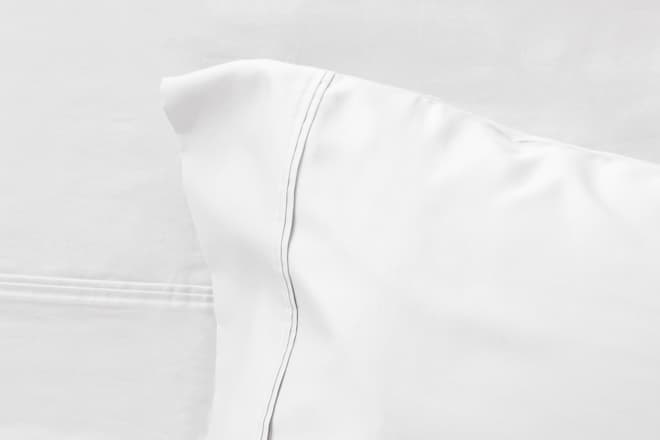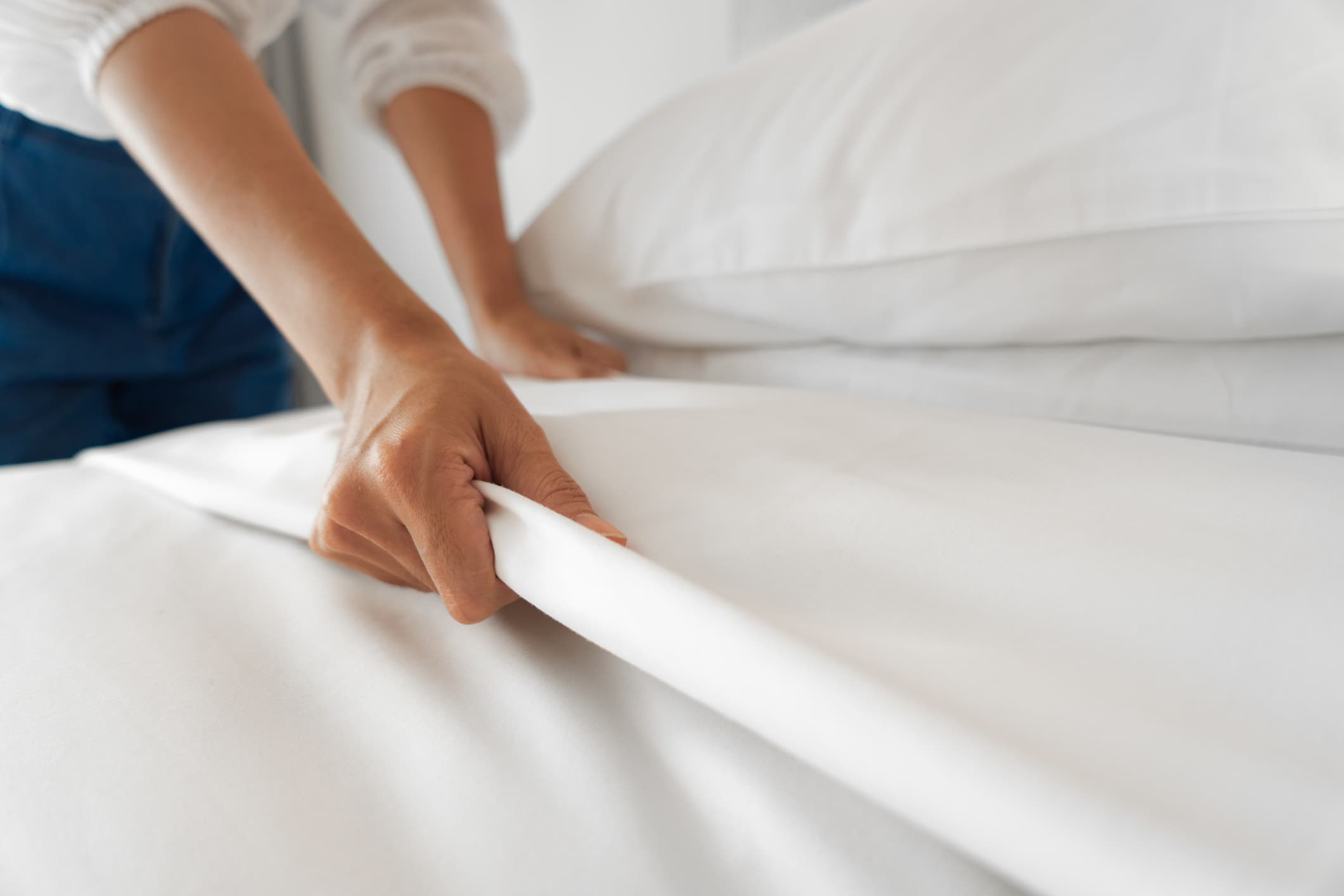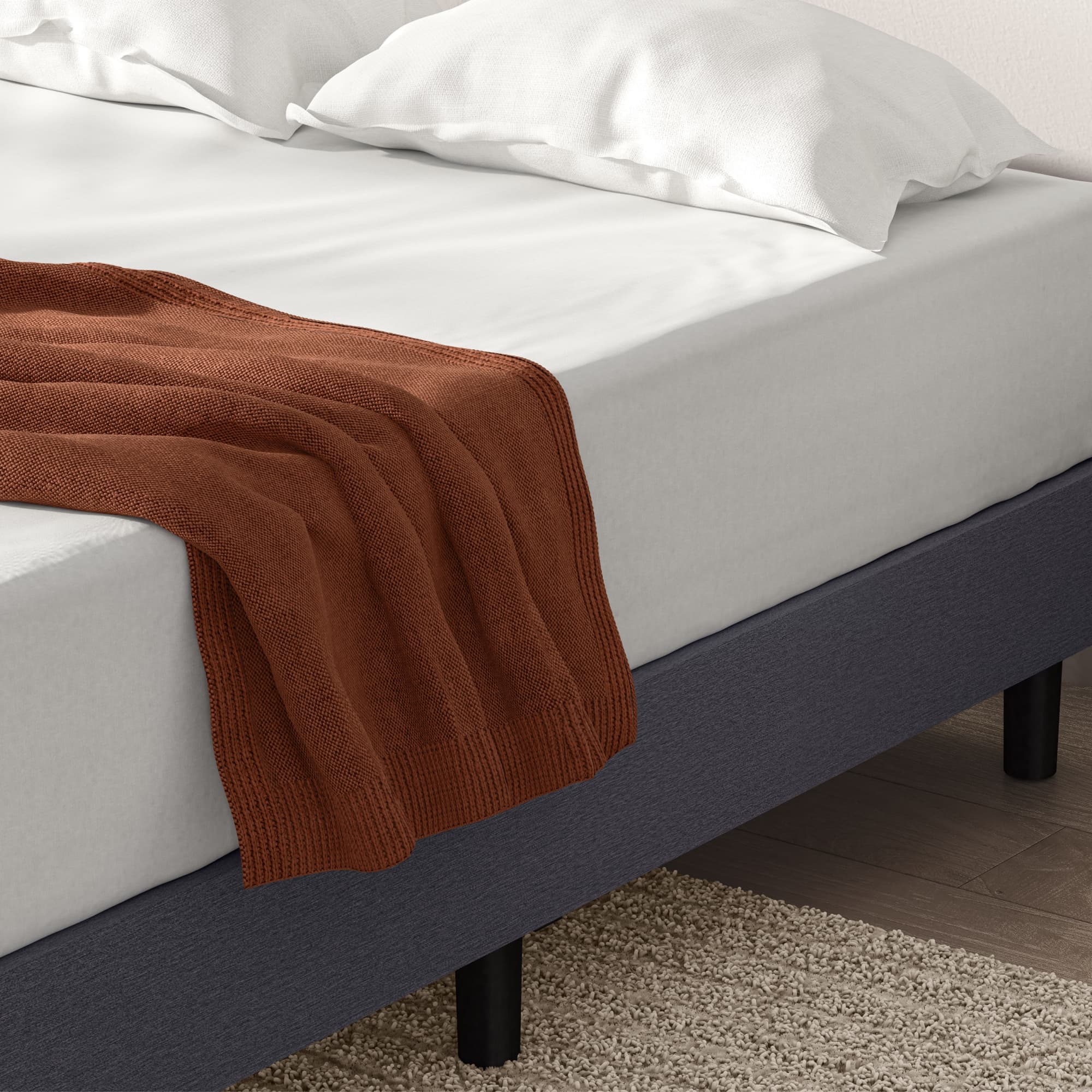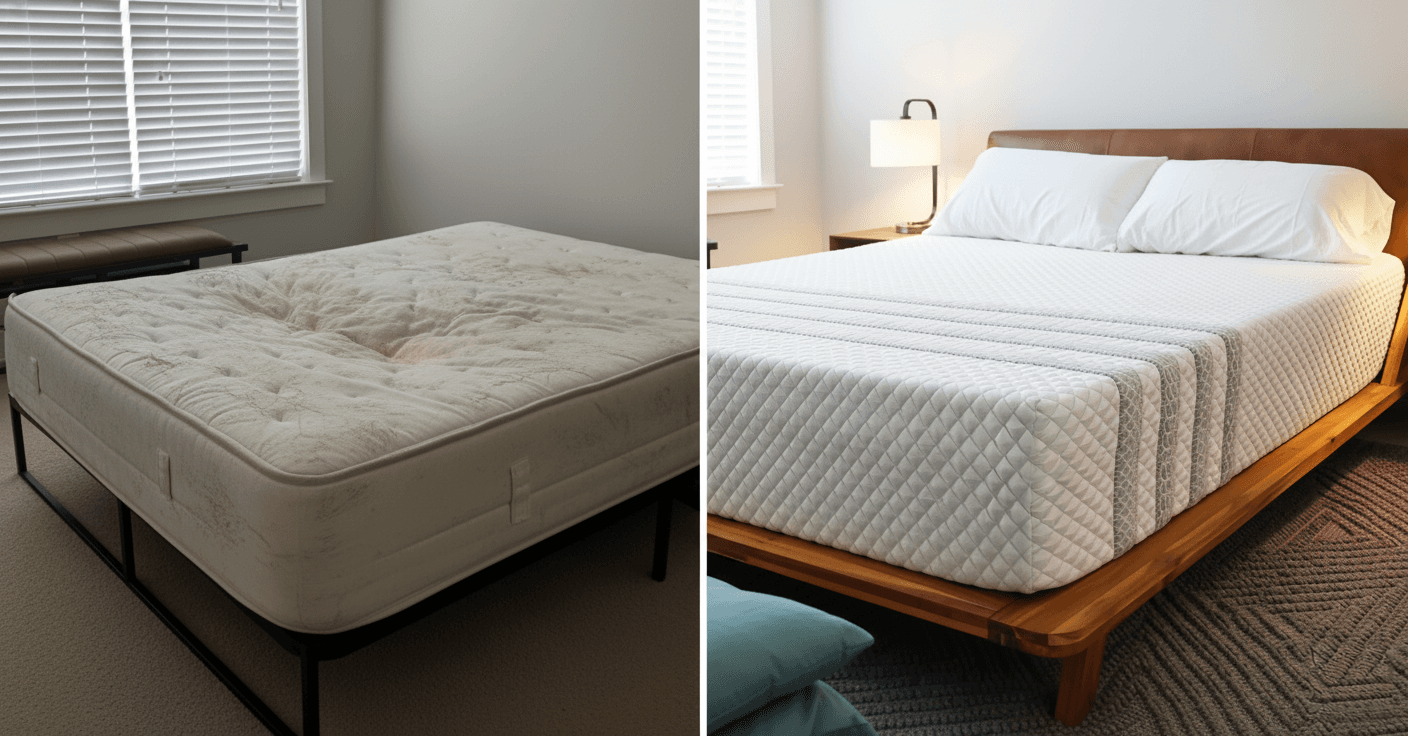When it starts getting chilly and you find yourself pulling out the cozy winter blankets and flannel pajamas? Don’t forget to take a look at your sheets too. The right set of warm sheets for winter can help keep you toasty and comfortable as the temperatures drop.
Not sure what the best sheets for winter are? You’re in the right place! This guide will cover different types of material, warmth ratings, weaves, and more to help you find your perfect winter sheets.
Different Types of Warm Bed Sheets for Winter
There are three main types of fabric used for warm winter sheets: cotton, flannel, and silk. We’ll look at the benefits of each so you can see which material is right for you.
Cotton bed sheets
Cotton is a staple when it comes to warm sheets for winter, thanks to its softness, breathability, and durability. In short, cotton sheets help regulate your body temperature while you sleep, so you can stay warm without overheating.
Leesa’s Cotton Blend Sheet Set is made from soft, cool, hypoallergenic natural fibers that will keep you comfortable all night. At 300 thread count, they hit that sweet spot that balances softness and breathability. So they’re great for hot sleepers who want a cozy winter bed but don’t want to wake up sweating.

Flannel bed sheets
If you tend to get cold at night, flannel is an excellent choice for warm winter sheets. Flannel sheets trap and retain heat. So if you like to cuddle up in a cozy cocoon on those chilly winter nights, flannel is the way to go. Keep in mind that flannel sheets may feel a little stiff at first, but the more you wash them, the softer they get.
Silk bed sheets
Incredibly soft, naturally hypoallergenic , and highly breathable—silk sheets are the epitome of luxury. Like cotton, silk offers superior thermal regulation, so you can stay warm and cozy but not hot. Plus, thanks to its long, smooth, tightly woven natural fibers, silk is gentle on skin and hair, helping it retain moisture and preventing damage.
Thread Count and Material
Cotton sheets are measured by thread count, but there are a lot of misconceptions about thread count and what number is best. Thread count refers to the number of threads woven into one square inch of fabric. So you might think a higher number is always better, but that’s not strictly true. For example, 300-thread-count sheets made from high-quality cotton will likely feel softer than 600-thread-count sheets made from lower-quality cotton.
In addition, there are different tricks manufacturers use to artificially inflate their thread counts, such as using thinner, poor-quality threads. So, with a good-quality fabric, a thread count of 250-450 will likely give you a good balance of softness, breathability, and durability.
Silk, on the other hand, is measured in mommes (mm). Which is the weight in pounds of a 45-inch by 100-yard piece of fabric. Anything below 20 mm is considered lightweight, 20-28 mm is medium-weight, and over 28 mm is heavyweight. For bedsheets, medium-weight silk is typically best since it will be soft and durable but still breathable. (To make things a little more complicated, silk is also graded, with 6A being the highest quality and F being the lowest.)
Finally, flannel is measured in grams (or ounces) per square meter (GSM or OSM). Like silk, when it comes to warm sheets for winter, you generally want to look for something in the middle range. Around 114-140 grams or 4-5 ounces. However, unlike silk and cotton, flannel can be made from a wide variety of materials, including wool, cotton, and synthetic fibers. So flannel sheets made out of different materials can vary in softness and breathability, even if they have a similar GSM.
Factors to Consider When Buying Winter Sheets
When you’re looking for the best sheets for winter, there are a few more factors to consider. (You didn’t know sheets could be so complicated, did you?)
Temperature Rating
We’ve already talked about how sheets are measured depending on what they’re made of. But in addition to softness and durability, those measurements also tell you a lot about how warm your sheets will be. Each measurement—thread count, momme, GSM—directly affects the density of the sheets, and the denser they are, the more heat they’ll trap.
So, if you live in a colder climate (or you naturally sleep cold)? You may prefer denser sheets that will hold on to more body heat as you sleep. On the other hand, if you live in a milder climate where temperatures rarely drop below freezing (or you're a hot sleeper), you might be better off with less dense, more breathable sheets to keep from overheating at night.
Weave and Texture
People often get confused about the difference between fabrics and weaves. Take silk, for example. One-hundred percent of silk sheets are made only from natural silk fibers. But those fibers can be woven in several different ways to form the material. Charmeuse and satin are the most common types of weaves used to create silk bedding, and both work well for temperature regulation.
The percale weave gives sheets that crisp, light feel and tends to stay cooler. Whereas sateen is just the opposite—it’s silky smooth and traps more body heat. Flannel is usually made using a twill or percale weave. But then the surface is brushed to distress the fibers and give the material that fuzzy, dense feel.
Care and Maintenance
Some types of warm winter sheets are more durable than others, but they all require specific care to maintain their warmth, breathability, and softness.
Cotton and flannel: Cotton and flannel sheets do best with cold water and mild detergent on a gentle wash cycle. You can dry them in the dryer, but be sure to use low heat. If they’re stained, extra-dirty, or need to be sanitized? You can use hot water and/or a heavy-duty wash cycle, but you don’t want to make it a habit. Instead of using fabric softener or dryer sheets, try using tennis balls or wool dryer balls to prevent static .
Silk: Light and delicate, silk should only be washed on a delicate setting. Or by hand in cold water and line dried away from direct sunlight. Use a gentle, pH-neutral detergent or one specifically made for silk, and wash separately from other materials. If possible, use a mesh laundry bag to keep your sheets from getting caught on anything and tearing or snagging.
When warmer weather rolls back around, you can store your winter sheets in breathable bags with cedar balls or lavender sachets to help repel moths. Make sure they’re freshly laundered before storage, and keep them in an area with low humidity to prevent mildew.
Stay Warm This Winter with Leesa
Whether you’re a hot or cold sleeper or in a frigid or mild climate? There are a lot of options for warm winter bedding that will keep you at your ideal sleeping temperature. Both cotton and silk offer warmth and breathability. While flannel is snuggly and insulating. And different weaves and thread counts can affect how much body heat your sheets retain.
If the temperature drops have you shivering under your blankets, Leesa has the perfect warm sheets for Winter. Plus all of the other bedding you need to keep you cozy and comfortable through the long, cold nights.
FAQs
Are there specific sheets designed for extreme cold climates?
If the temperatures regularly drop below zero in your area? You may want to look for higher GSM wool flannel sheets for the ultimate cozy warmth. However, if you’re naturally a hot sleeper? Materials like cotton and silk can help you better regulate your temperature at night so that you can stay warm but not hot.
What is the difference between flannel and fleece sheets for winter?
Flannel is a brushed fabric with a looser weave that’s typically made from either cotton or wool. It’s light enough for excess heat to escape but dense enough to keep you warm. Fleece, on the other hand, is made from polyester or other synthetic materials. It features a thicker, tighter weave. So it’s less breathable and traps more body heat.
Can I use warm sheets for winter in a mild climate?
The best bedding is the type that feels most comfortable for you. So if you naturally sleep cooler and want warmer sheets even during mild or warm weather, go for it! Cotton and silk sheets are great for thermal regulation, so they’ll keep you warm all night without overheating.



